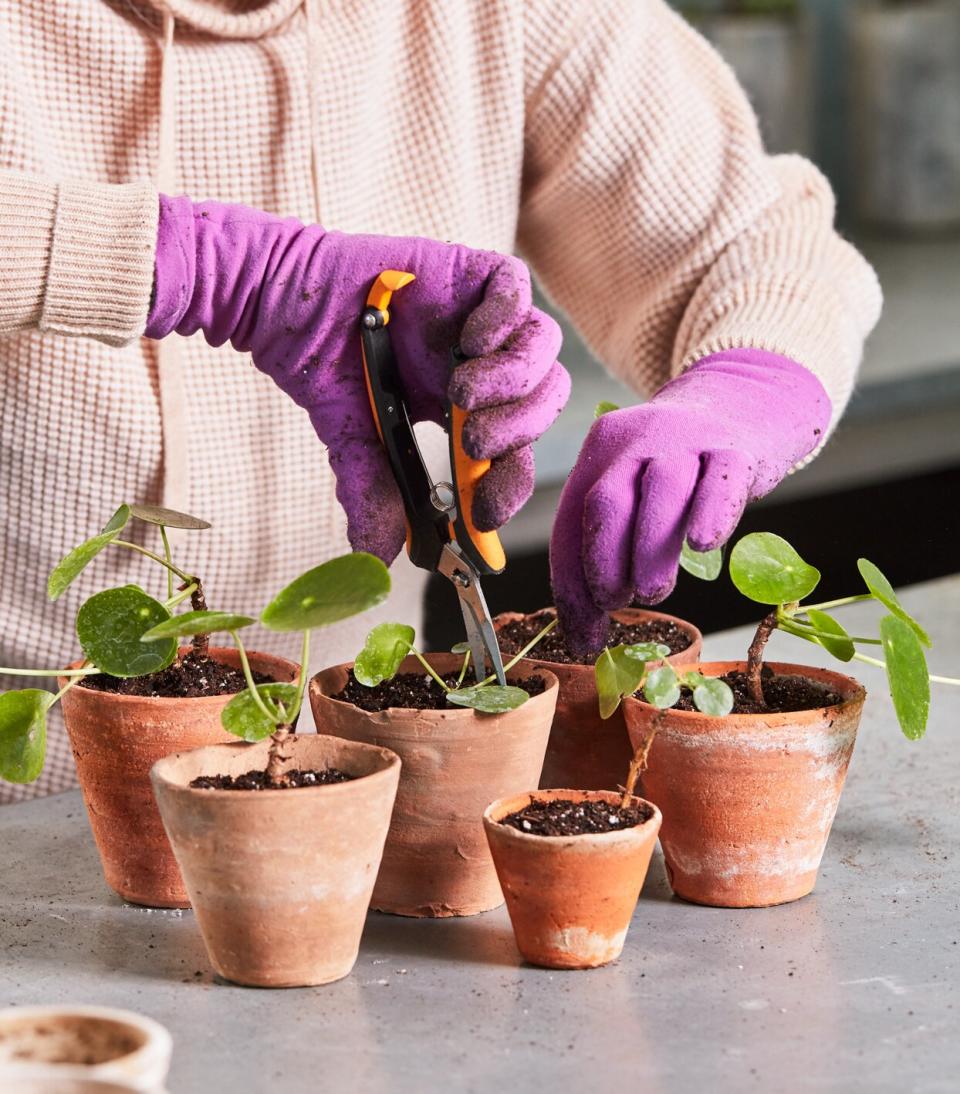How to Grow and Care for Money Plants—Plus Martha's Tips for Propagating Them

Ngoc Minh Ngo
TABLE OF CONTENTS
On This Page
Grow
Care
Propagate
Pilea peperomioides is the gift that keeps on giving. Also known as the Chinese Money Plant, this sought-after charmer is an unfussy variety that continuously produces offspring. Because it's so easy to grow, Martha loves to give pots of the plant as gifts to friends, and especially children.
According to Marc Hachadourian, the director of glasshouse horticulture and senior curator of orchids at The New York Botanical Garden, these houseplants grow from thickened stems that produce long petioles with coin-like leaves—which are said to symbolize good fortune. "Even though the species name suggests it resembles a peperomia, the plant is a member of the stinging nettle family—but, thankfully, without the irritating hairs that some of its cousins have," he says. "It will produce clusters of small green flowers on a branching inflorescence that are easily overlooked by the curious and attractive leaves."
Related: Low-Maintenance Houseplants That Will Live Even When You're Away
How to Grow Your Money Plant
As a houseplant, Hachadourian notes that the money plant is easy to tend to—so long as you maintain its conditions as it sits on a windowsill or another spot indoors.
Lighting
"It prefers medium to bright light and can be stressed or burn in very intense sunlight," says Hachadourian. "If you hold your hand about 1 foot away, your hand should make a slightly diffuse shadow—if the shadow is sharply defined it might be too much light." If the leaves are a yellow-green color—instead of a bright, light green hue—then it could be a sign that the plant is receiving too much sunlight.
Soil
The money plant needs a well-drained mix of soil with perlite for added drainage to stay healthy. Plus, it needs ample aeration to allow it to dry out a bit—not completely—between waterings. You'll notice that the thickened stems will rot if the plant is too water-logged.
Environment
"Like many houseplants, the money plant can tolerate periods of low humidity and drying—making it a good plant for interiors," says Hachadourian. "It would benefit from regular applications of dilute fertilizers that will help the plant produce abundant leaves and even side branches, which can be removed and easily propagated as cuttings."
How to Care for Your Money Plant
As the plant grows, it will produce a tall stem and branch. At this point, you can either use a small stake to secure it or allow it to grow in horizontal degree into serpentine-like shapes, says Hachadourian. "If the plants are too tall, you can easily cut the tip of the growth, leaving several inches of stem and root the tip as a new cutting," he says. "As plants get older, they will make side branches, which can be left to allow the plants to develop into many leaved specimens or removed and propagated to increase your collection or share with others."
How to Propagate Your Money Plant
Since these plants can be repotted to propagate and gift to others, follow Martha's process to spread the wealth.
Related: 9 of Martha Stewart's Unique, Beautiful Houseplants—Plus, a Look at How She Displays Each
Look for Plantlets
A plant will produce little offshoots, or pups, that sprout from the soil. When they're 2 to 3 inches high and have several leaves, they're ready to be repotted.
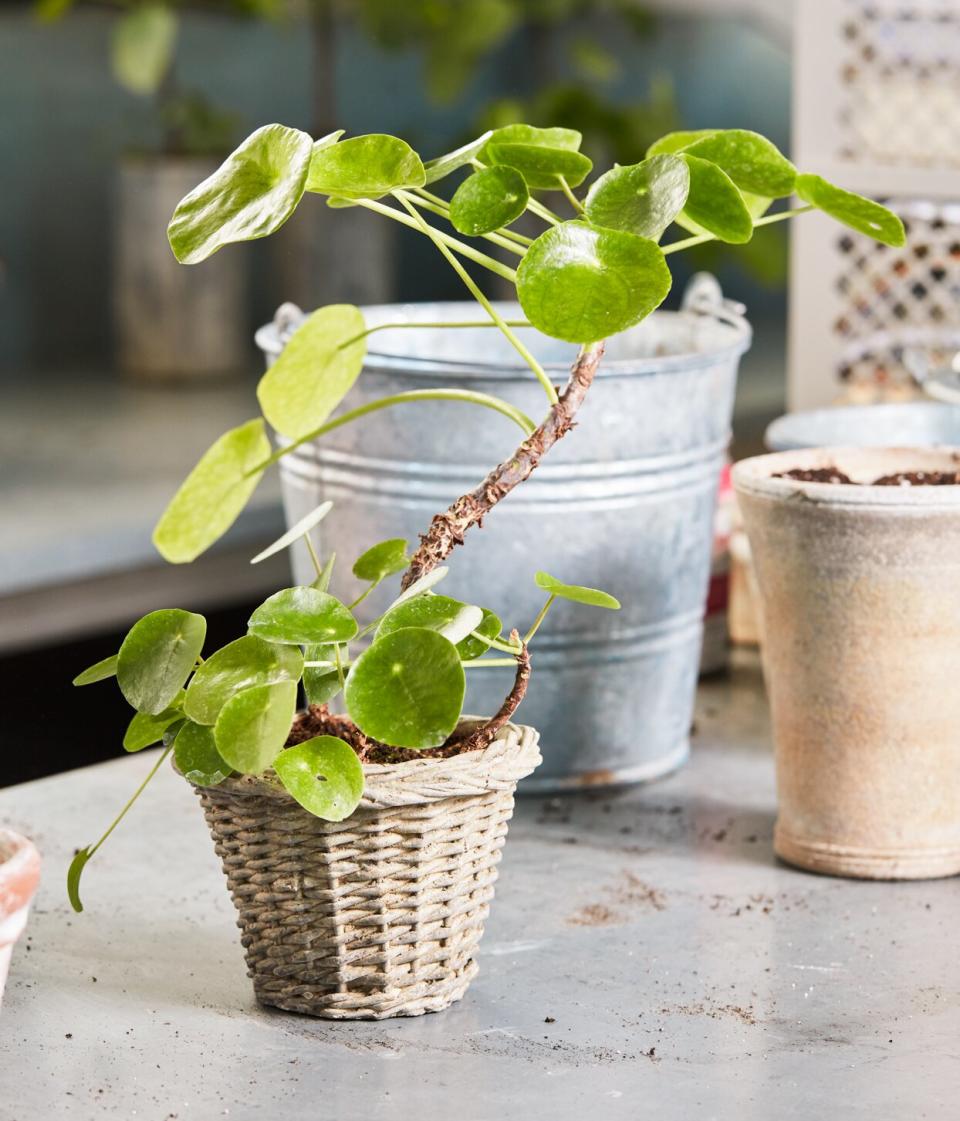
Make the Cut
Carefully remove the entire plant from its container. Using a sharp, clean knife, gently slice around each plantlet.
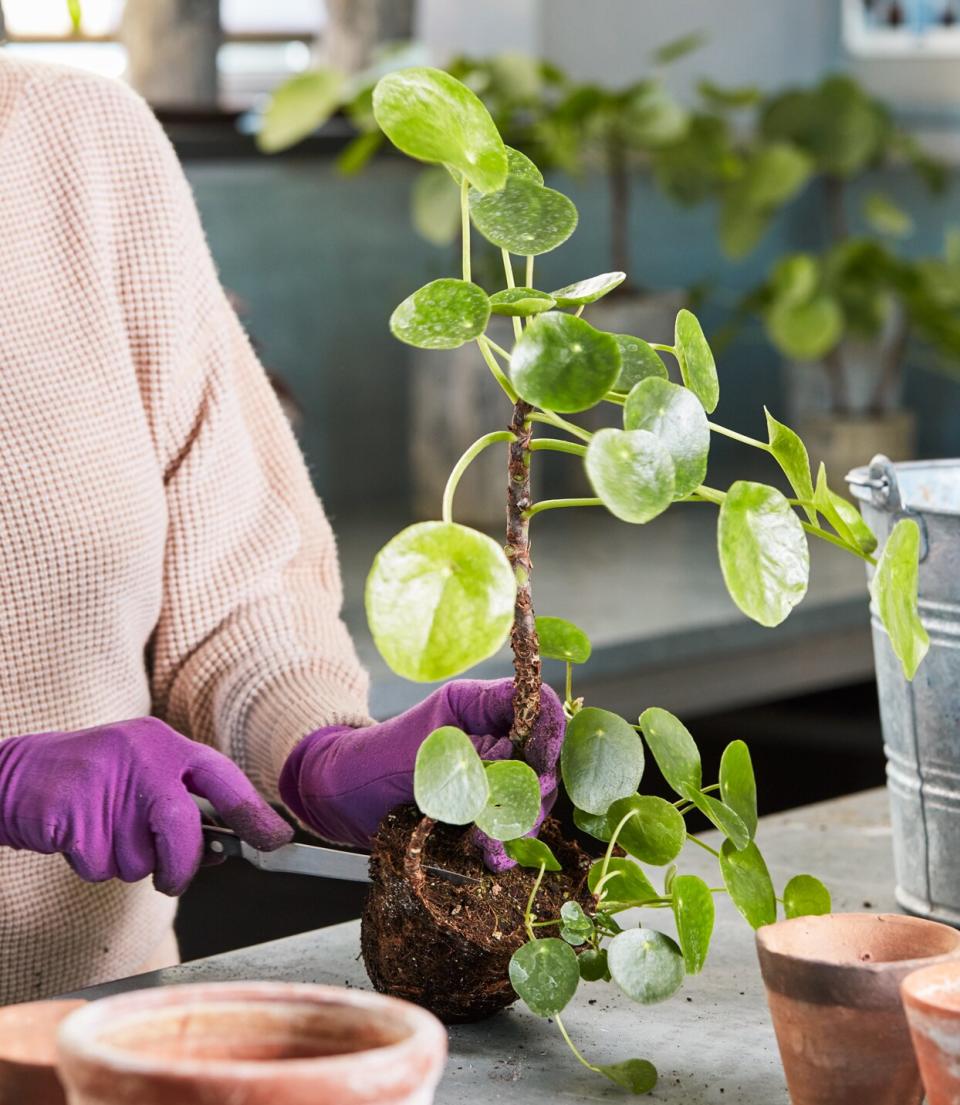
Arrange for Planting
Each pup should have at least an inch of roots attached. Repot the mother plant back into its original container.
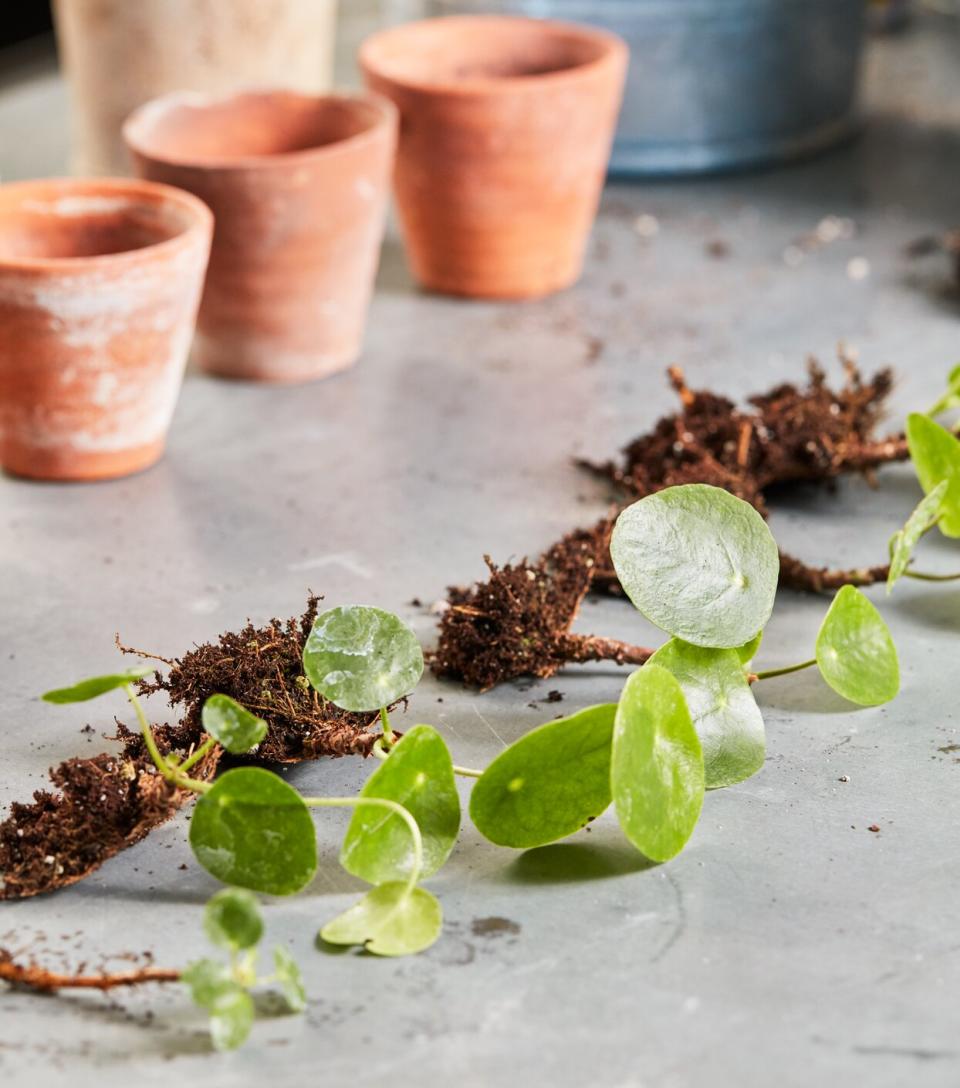
Prep Small Clay Pots
Place a pottery shard in the bottoms to cover the holes. Fill about two-thirds of each container with a well-draining potting soil mixed with granulated organic fertilizer. Repeat.
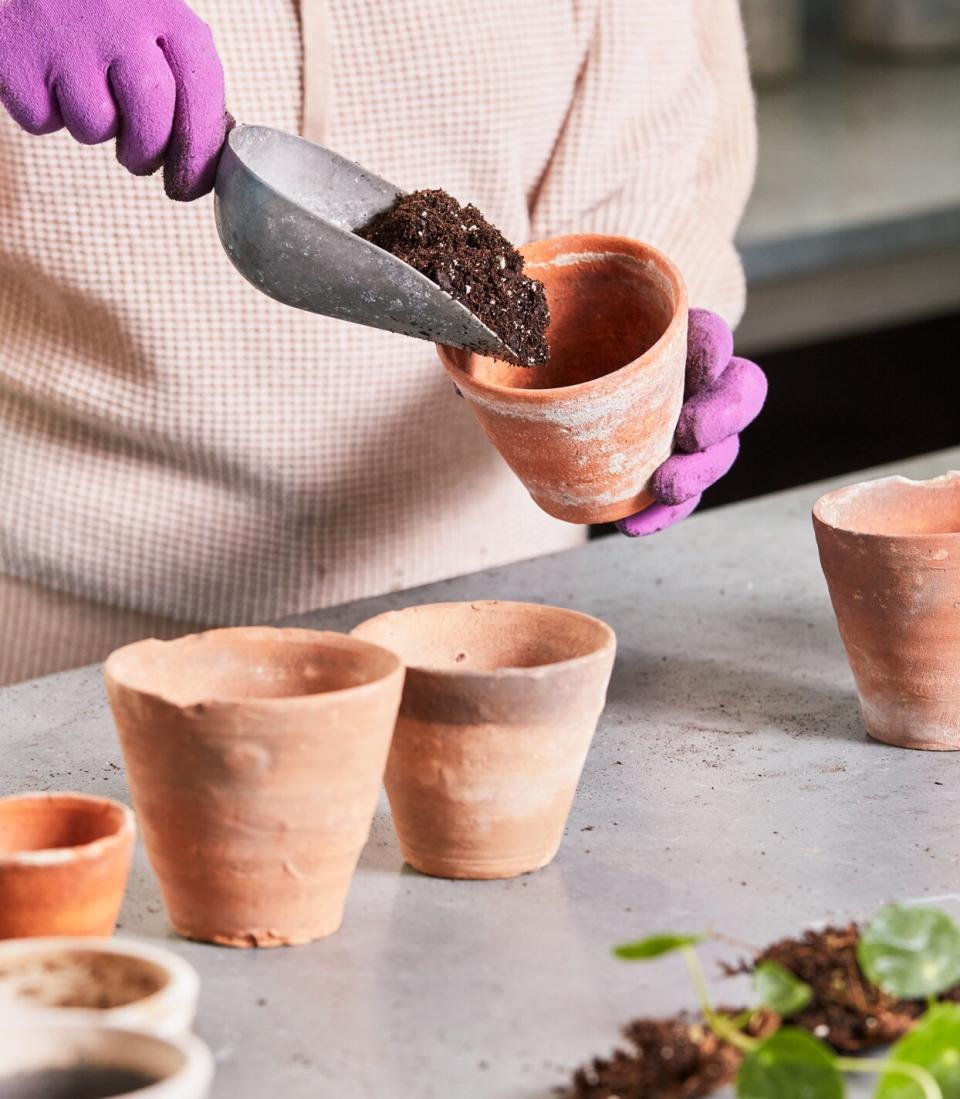
Insert Plantlets
Nestle each pup into a container. Its depth should be the same as it was when growing on the mother plant. Fill with soil, and tamp it down lightly to remove air pockets.
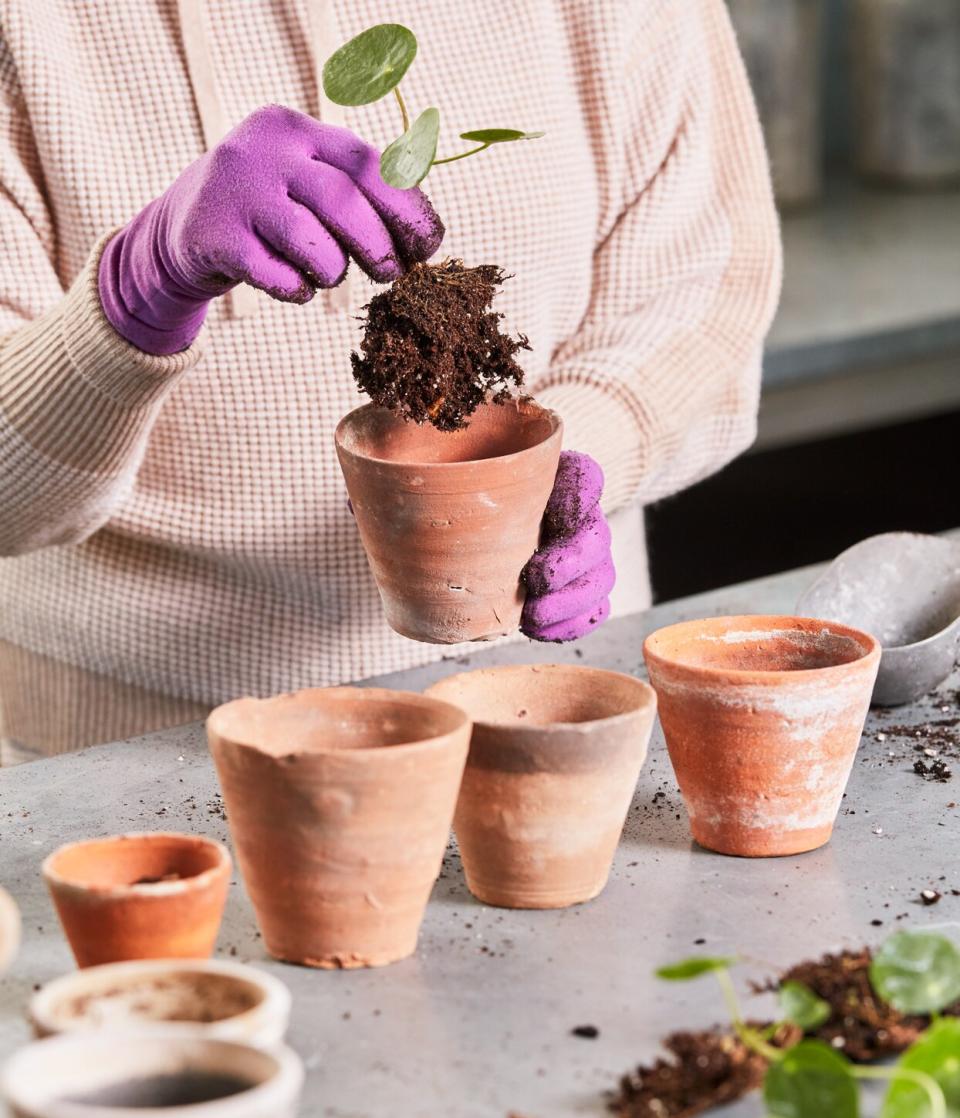
Groom and Hydrate
With clean, sharp clippers, snip away any damaged leaves. Water each pot thoroughly. Place them in a spot with bright indirect light, and let the soil dry out between waterings.
